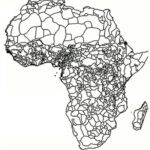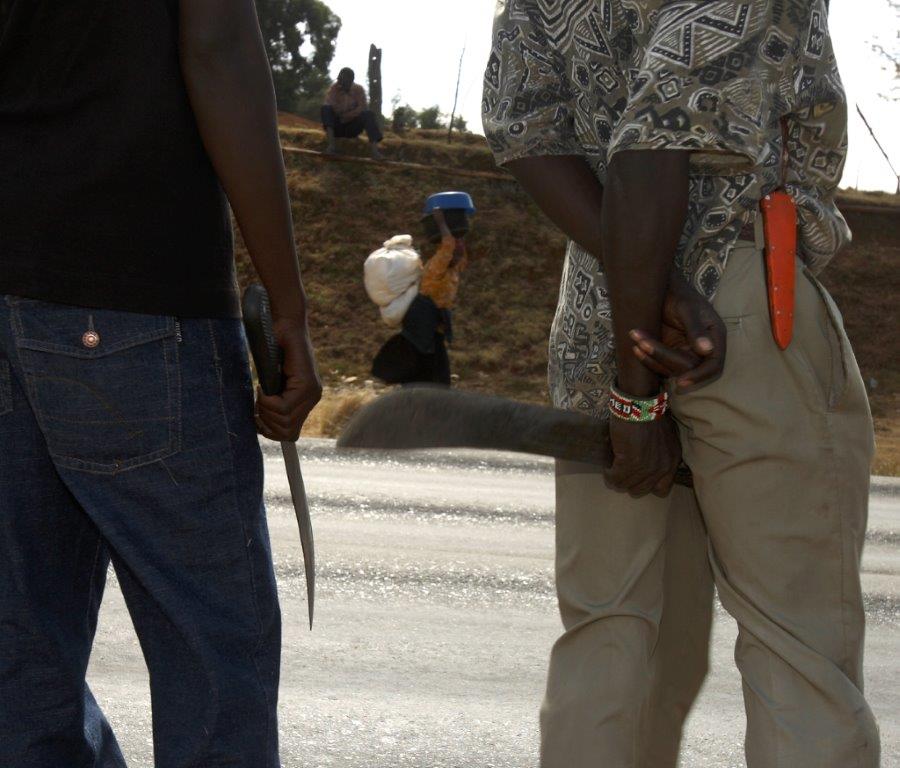Women of the Nandi and the Luo no longer want to wash their clothes together in the River of Lions, the river dividing their tribal areas. Because of the forthcoming elections, tensions between their tribes have risen to boiling point.
“I see signs of violence,” says Atieno Atito, teacher in the village of Kopere on the right bank. To the right of the river, on the plains of Lake Victoria, live the Luo’s, to the left in the hills live the Nandi’s. Every day Atito sees Luo’s with trucks full of household goods departing from Nandi dominated area. In schools and churches in Kopere, preparations are made for the reception of displaced persons.
“They are different from us,” Atito points out to a hill across the river. “They are voting for the government party of President Uhuru Kenyatta, we are for the party of opposition leader Raila Odinga. These people at the other side of the river think that in a democracy the winners take all, including our fields. That’s why, since the introduction of the multi-party system, Kenya has no longer known peace.”
In the run-up to the elections on August 8, Kenyans live in fear again. Since the multi-party democracy in 1991 during every election politicians stir up local tensions. That trend culminated at the end of 2007 in large scale violence throughout the country. Hot-tempered youth blocked roads, transport and trade came to a standstill. For many weeks, the country was on the edge of the abyss. An estimated 1,500 people were killed, half a million people were displaced. International peacekeepers sped to Kenya to save the country.
Kenya, independent since 1963, is a relatively modern African country with a bustling capital. But economic progress has not had a positive effect on the behavior of the political class. Politics is still based on old fashioned appeals to tribal feelings. “Politicians appeal to your tribal culture and your native language,” says a man in the Kopere market. “They say we will be exploited by the other tribe when our tribe loses.”
Land ownership is central to this cynical power game. Politicians ignite their tribal ranks with sentiments of historical injustice. Even if sharply demarcated tribal areas did exist before colonialism, these were thrown into disarray in the area around Kopere.
A British railroad
At the end of the 19th century, the British built a railroad from the Indian Ocean port city of Mombasa to inland Kisumu. The Nandi’s strongly opposed it. From 1890 to 1906 they fought the well-armed invaders with spears and bows and arrows. The resistance was broken in October 1905 with the brutal murder of Koitalel arap Samoei, Nandi’s tribal chief.
The British expelled the Nandi’s to the hills from the area along the railway. Their place was occupied by contract workers of the Luo tribe. That historical injustice still forms the basis of tensions between these tribes. While the British slow train is now being replaced by a state-of-the-art Chinese railway line, and every Kenyan has the right to buy an acreage anywhere in the country, some ethnic nationalists continue to refer to traditional tribal rights on land.
The first “tribal clashes ” started around elections time in 1991. After the introduction of democracy, President Moi felt threatened and started setting up tribes against each other. Divide and rule tactics, like the colonialists practiced. With the cooperation of local authorities, members of his Kalenjin tribe (which includes the Nandi’s) began to expel Luo’s, followed by revenge actions against Kikuyu tribe members living in Kalenjin area.
Political enmity leads to tribal animosity, because every tribe cherishes its own political leader and party. So, when the Luo’s and the Kalenjin had forged a political alliance before the elections at the end of 2007, there were no tribal conflicts in and around the Nandi hills. During those elections, the violence of Kajenjin youth was aimed against the Kikuyu. At the current elections, President Uhuru (a Kikuyu) and Vice President William Ruto (a Kalenjin) have lined up against the opposition led by Odinga (a Luo).
The most dangerous is the situation for tribal members living outside their native tribal area. It is awkwardly quiet at the farm of Peter Omondi. He lives in an enclave in the Nandi Hills, with another three hundred Luo inhabitants. “Fifty years ago, my father bought this white-owned farm. He felt at that time that Kenya was one country. But with the multi-party system, the divisions came. “Now, the Nandi’s want to chase me out”, says Omondi. “They have stolen all our chickens and cows, so that’s why you hear the sound of silence.”
The Luo’s in the enclave hear their Kalenjin neighbors hatefully say: ‘Go back to your own territory’. “I do not understand politics”, complains an old woman, “but I’m afraid”. An agitated man interferes: “The Kalenjins want to force you to vote for their party.”
Along the River of the Lions on the Nandi side, lives Kipsutko Koech, one of the Kalenjin’s elders. “Elections always hit a sensitive nerve with Nandi’s”, he says, “that the Luo’s have penetrated our tribal area.” Koech is the prototype of an ethnic nationalist. “The law that allows you to buy land everywhere in the country is wrong”, he says. “Our culture, our habits, they are tribal. And every tribe belongs to an area. You can not maintain the culture if you allow the mixing of tribes, it is against the will of God.”
The desire for ancient tribal homelands still reigns throughout the continent of Africa and is not just based on nostalgia. Because even after independence, the stealing of land continued, not by whites but this time by members of tribes with the greatest political influence. Landownership has become a ticking time bomb.
Kipsutko Koech points to the river. “That border is written with blood. We know that it is the whites who have caused all our problems, but there are still other foreigners in our country that we must fight. We hope that someone will be elected who will send out the Luo’s from here. Because a Nandi does not give even a spoonful of soil away from its territory”.
This article was first published in NRC Handelsbald n 31-7-2017
Photo’s around the River of Lions Ilona Eveleens. First photo of violence in 2007/8 Petterik Wiggers

